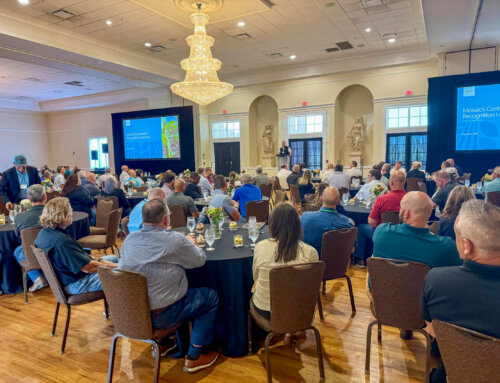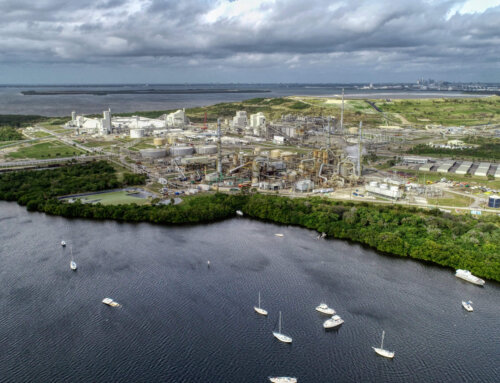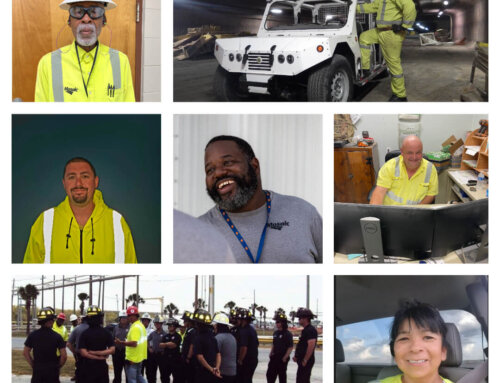An interview with Mosaic’s Sr. Manager of Engineering, Andrea Williams
By LaQuinda Brewington
Leaving the familiar for the unknown isn’t easy. Just ask Andrea Williams.
In 1979, Williams, Sr. Manager of Engineering at Mosaic, had just earned a chemical engineering degree from the University of the West Indies in Trinidad. Shortly after graduation, she decided to migrate to the United States and began working in an industry where she saw very few people who looked like her.
“When I joined (Mosaic predecessor) IMC, I was their only female engineer,” said Williams. “Now, there are vast opportunities that exist in the industry, so I’ve had a chance to work in the mines, I’ve worked on the concentrates side, and I’ve worked on a number of energy initiatives.”
Today, Williams leads the team of civil engineers responsible for managing all of Mosaic’s active and inactive phosphogypsum stacks, also referred to as “gypstacks.” Over the last 40 years, she has had a bird’s eye view of just how much the phosphate industry has evolved, and we sat down with her recently to talk about her work and the way Mosaic approaches the very important task of managing gypstacks.
What does managing a gypstack mean and what role do you play?
One of the unique things about gypstacks is, unlike most dams, they are constantly changing in elevation until they reach a permitted height. Because it’s a highly regulated part of our business, we’re constantly monitoring the gypstacks to ensure that the slopes on the stack are correct. We submit annual reports to various government agencies based on the daily, weekly, quarterly and annual inspections we’re required to perform on our stacks. A third party provides verification of what we do on a routine basis. My background is chemical engineering and for many years I worked in the concentrates plants where I was focused on the end-product, which is the fertilizer we make. What I do today represents the other side of the equation because I’m looking at the gypsum we have to stack because of state and federal regulations and the process water that’s stored inside. A big part of building and managing the stack is ensuring that water will not escape the stack and we’re able to capture and reuse it in our production process.
What’s the biggest misunderstanding people have about gypstacks?
I don’t think many people realize the monitoring that the company puts into ensuring the safety of the gypstack and the nearby groundwater. We obtain samples from our monitoring wells on a routine basis to make sure we’re not negatively impacting the water. Our regulations are some of the most stringent in the country, however they were not put into place only for Mosaic. These standards have been put into place for all US phosphate companies and are being adopted globally. As an example, prior to 1993, gypstacks were built without any kind of composite liner; today’s regulations require a liner to help protect the groundwater.
What would you say to anyone who expresses concerns about gypstack management?
I’ve worked in this industry for 40 years and I’m still here. I would not have continued working for an organization I believed was engaging in environmentally unsafe practices or I thought was putting my own health at risk by showing up for work every day. Based on all that I’ve seen, we’re a responsible company. We don’t just talk about safety. We don’t just talk about protecting the environment. We strive to walk the talk. We do everything in our power to do that, including spending the money to ensure we have a safe operation. Were an incident to happen, it would be our employees who are impacted first, so we all understand the importance of our jobs and the need to remain vigilant in doing what’s right to protect the environment we share with other members of the community.





